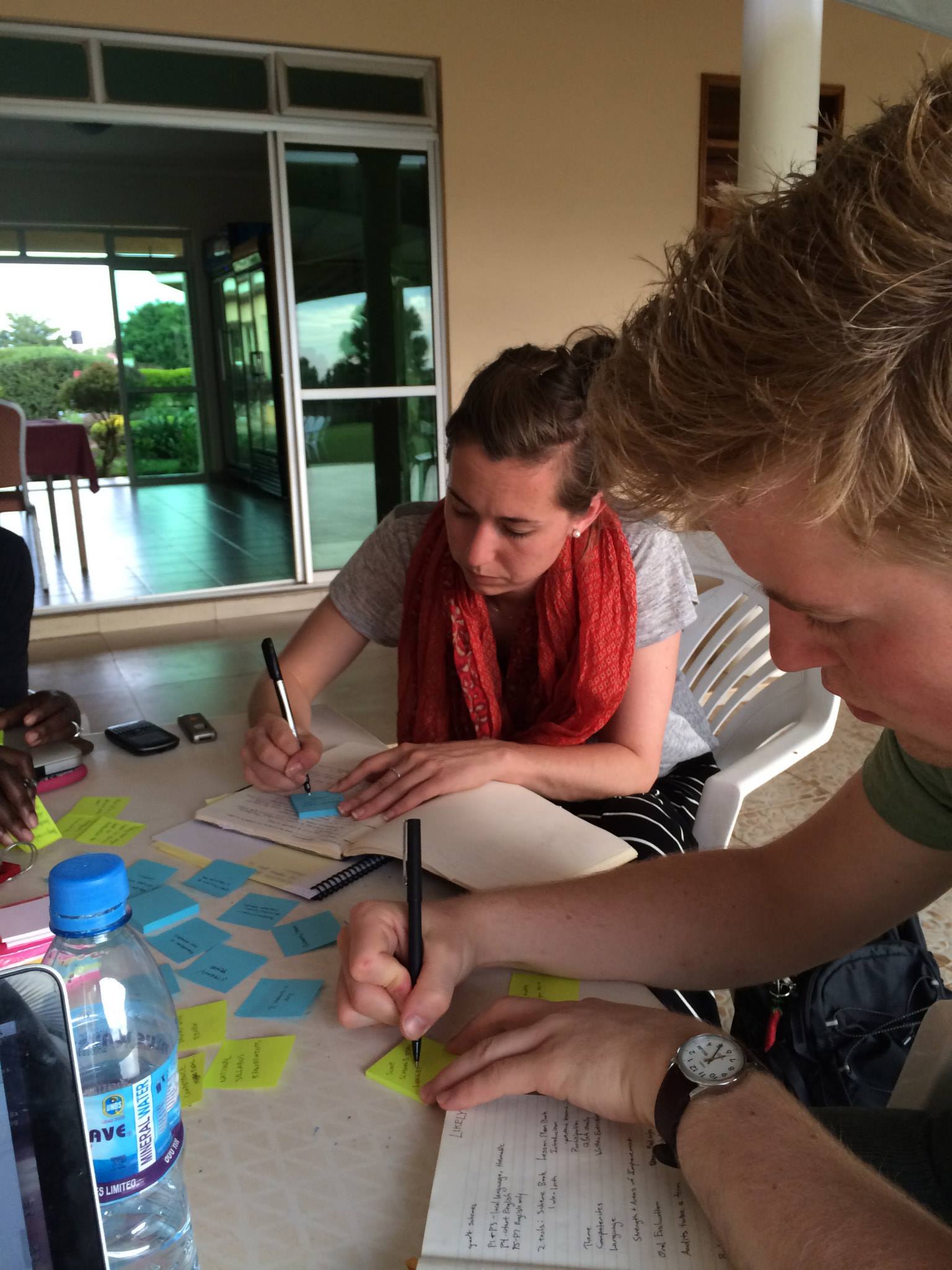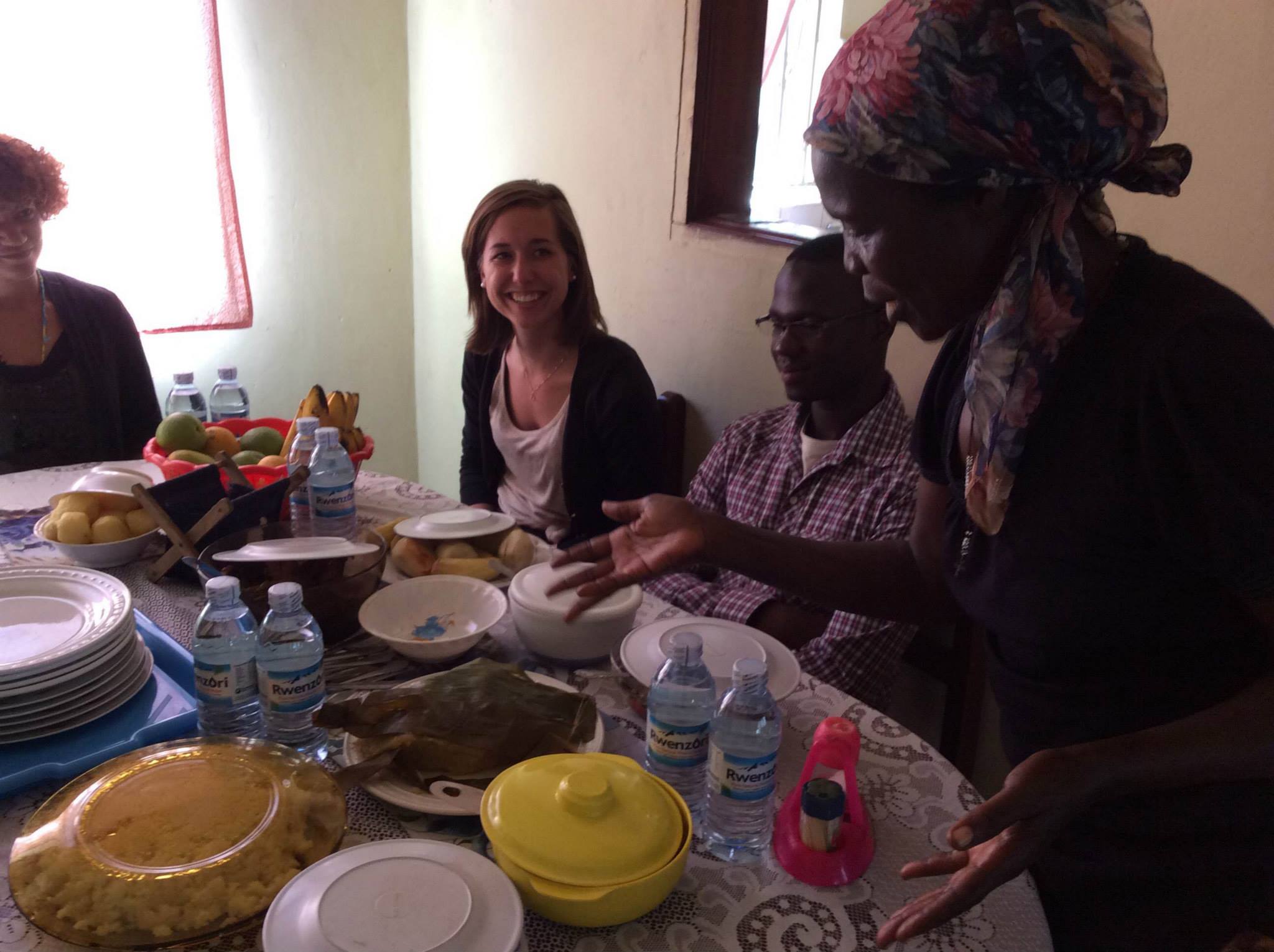Educate Ugandan Students about WASH
My team of Notre Dame design seniors teamed up with Lifewater International and Chicagoland creative agency Rule29 to create a new primary school curriculum teaching Ugandan students about safe water access, sanitation, and hygiene (WASH). Using Lifewater International’s existing WASH program as a starting point, we were tasked with improving the content and format of the existing 200+ page curriculum and corresponding educational tools to better suit the young Ugandan student using research, design thinking and information architecture. Ultimately, we had the opportunity to travel to Gulu, an impoverished rural region in northern Uganda, to test our prototype in two distinct primary schools. After our return, we synthesized our research and presented our findings to Lifewater and Rule29 with the intent to implement them in the future.

How might we educate rural Ugandan primary students about water access, sanitation, and hygiene principles?
Nearly 90% of Uganda's 35 million people live in small towns and rural areas, and roughly two thirds of them lack access to safe water. This problem is exasperated by poor sanitation and hygiene practices.
We teamed up with Lifewater International and Chicagoland creative agency Rule29 to create a new primary school curriculum teaching Ugandan students about safe water access, sanitation, and hygiene (WASH). Using Lifewater International’s existing WASH program as a starting point, we were tasked with improving the content and format of the existing 200+ page curriculum and corresponding educational tools to better suit the young Ugandan student using research, design thinking and information architecture. Ultimately, we had the opportunity to travel to Gulu, an impoverished rural region in northern Uganda, in May 2014 to test our prototype in two distinct primary schools. After our return, we synthesized our research and presented a research report of our findings to Lifewater and Rule29 with the intent to implement the curriculum in the future.

PHASE 1: Stateside Research
Since this project was initially slated to be completed within a semester-long course, we needed to conduct a vast majority of our research on the Ugandan educational system and existing WASH curriculum from a distance. We relied heavily on thorough online investigations into the culture and academic systems of Uganda, personal interviews with Ugandan contacts and American teachers in Uganda, and secondhand accounts from Justin Ahrens, Principal at Rule29, and Pamela Crane, the Director of International Programs at Lifewater International. Our Notre Dame research associate, Penina Acayo, a native Ugandan, also became the subject of many of our personal interviews about education and life in the East African nation.
Our questions were both culturally-focused and academically-focused, as we wanted to get a holistic sense of the experience of a Ugandan student and how this new curriculum could serve them both in and out of the classroom setting.
Additionally, we spoke with a few primary school teachers here in the USA, hoping that they could shed some light on how students of this age best engage with course material both in and out of the classroom.
PHASE 2: designing the curriculum prototype
In order to most effectively redesign the 200-page curriculum from Lifewater, we decided to revise and reimplement a few key factors: theme, activities, structure, and form. These factors showed up throughout three printed pieces: a teacher’s manual, resource packet, and individual student playbooks.
THEME
After investigating Lifewater’s existing curriculum, we decided that we wanted to implement an overarching theme that would better capture students’ attention and empower them to make a change in their communities. This theme would liken students to respected leaders and would be evident in the activities and stories found throughout the curriculum.
We chose to work with a football (soccer) theme because most children worldwide can relate to a love of physical activity. This also presented many creative thematic options, such as “playing against the bad germs that play for Team Unsafe Water,” yellow cards for failing to practice safe habits, scoring goals, and friendly competition.
STRUCTURE
The existing Lifewater International curriculum was written to last all day for five days and left no time for other classes. Additionally, it was structured into ten loose “building blocks” and was not grouped thematically by the key issues addressed (water access, sanitation, hygiene).
We restructured the curriculum to span the course of three weeks, with each week focusing on one of the three themes. The WASH curriculum would be taught for 40—50 minutes each day Monday through Thursday, then would focus on a special community outreach initiative each Friday in the hopes that the children would feel empowered to spread WASH knowledge in their homes and communities. Friday would also include a team-based oral examination, ensuring that the teacher can keep track of the students’ progress.
ACTIVITIES
We wanted to ensure that the curriculum provided teachers with a wide array of learning activities in order to accommodate many different learning styles. Our curriculum included interactive group activities, storytelling, blackboard activities, oral group examinations, demonstrations, miniature field trips, and individual workbook pages.
Our team proposed the creation and distribution of workbooks (known as playbooks, in keeping with the football theme) for each student. These would be used as silent activities while in class, but could also be taken home and used as a tool with which to educate others about WASH concepts.
FORM
In order to get the WASH curriculum delivered to the broadest audience, it needs to be easily reproduced. Bearing in mind that color printers are rare, if not impossible to access, in rural Uganda, we designed a black and white curriculum using Lifewater’s new brand standards, as developed by Rule29.
Since we opted against using color to organize our curriculum elements, we relied heavily on different type treatments, a basic icons set, and call-outs to place emphasis, provide supplemental materials, and mark transitions.
“The proposed design research process is intended to assist us in developing a stronger empathy for the extreme cultural differences between privileged American designers and rural northern Ugandan schools through observation, surveys, interviews, and ethnographic research. By using cross-cultural and cross-disciplinary collaborative techniques with teachers in rural Ugandan communities near Gulu, we hope to develop a greater understanding of the nuances of using design thinking in an unfamiliar context, ultimately producing a WASH curriculum that best suits the needs of our friends in Uganda, from a content-based, verbal, and aesthetic perspective.”
phase 3: prototype testing and ethnographic research in gulu, uganda
During our time in northern Uganda, we visited two different schools: smaller Mother Teresa Primary (private, Catholic) and larger Laiyibi Primary (public). The difference in size and government funding between these two schools made for an interesting contrast that enhanced our research even further.
We arranged to have group interviews with primary teachers at both schools. While our focus was more on upper primary (Ugandan P4-P7), we welcomed teachers of younger students as well. We were mostly concerned with learning more about the Ugandan education system and how water, sanitation, and hygiene is currently taught in schools; however, we wanted to ask some questions about the design and organization of our curriculum prototype if time permitted.
After our group interview sessions, we went on tours of the school grounds and had further, more personal (and non-research-based) interactions with the teachers. These informal sessions helped us get a better understanding of the school culture and the resources they had available for use in the classroom.
Phase 4: DEVELOPING our research report
At the completion of our research, we grouped and synthesized our findings. Ultimately, we presented Lifewater International and Rule29 with a research report document that detailed our process, findings and recommendations for moving forward with a new curriculum design.
Key insights
Government-mandated syllabus renders our prototype teacher’s manual useless.
Despite all of our remote research when preparing the curriculum prototype, we never encountered the government-mandated syllabus in Uganda that instructs the teachers when and how they are supposed to teach each element of water, sanitation, and hygiene education.Teachers are always looking for resources to supplement their lessons.
Teachers are given a copy of the mandatory syllabus for their grade level, however, they have to purchase separate books that provide more in-depth lesson plans and teaching resources. Because of the lack of funding given to schools (particularly private schools), teachers often have to pay for these tools with their own money, therefore relying on inexpensive or free resources and activities whenever possible.

Strategic recommendations
Rework our curriculum into a supplemental resource packet to use with the syllabus.
After talking to teachers and conducting our own additional research on the government-mandated syllabus, we recognize that there is an opportunity to create a set of supplemental materials that work in conjunction with the national requirements. These materials could include stories, field trip ideas, test questions, community outreach project suggestions, coloring pages, workbook pages, songs, dramas, and demonstrations. Many of these elements were already incorporated into our initial prototype and would just need reorganization to translate into this type of resource packet.Encourage the creation of a WASH club in primary schools.
At many schools, students are required to participate in at least one after-school club or activity. Schools can help encourage WASH behaviors by creating and promoting a WASH club that focuses on keeping the school compound clean and spreading the word about safe water, sanitation, and hygiene. Positions in this club can be held in high esteem and leadership roles will be coveted.
Special thanks to the whole team
ND Design Team: Emily Hoffmann, Carmel O’Brien, Amanda MacDonald
ND Research Team: Emily Hoffmann, Jeff McLean, Penina Acayo, Anne Berry
ND Design Faculty: Robert Sedlack, Penina Acayo, Anne Berry
Supporters: Justin Ahrens, Pamela Crane, Hermann K, Renzioni
In loving memory of Robert Sedlack
































